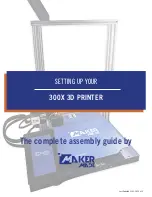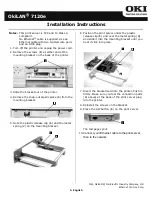
CP80 and CP80 Plus Service Manual
2-33
6.
The clock signal is activated.
7.
The reader releases the Reset by bringing it to a high voltage.
8.
The card then issues its Answer To Reset (ATR). The ATR is a hexadecimal
string up to 32 characters and contains:
•
The format of the communication
•
Permissible baud rates
•
Parameters of the circuitry in the card
•
Required programming voltage on Vpp
•
The make and model of the card
•
Other information the manufacturer chooses
9.
With communication parameters known, the interface can begin to
communicate with the card.
10.
Serial communication across the I/O line commences.
11.
If necessary, the voltage on Vpp is altered, and information can be written to
the card.
Non-Contact Smart Cards
Types of Cards
Whenever a new technology is developed by multiple manufactures, there tends
to be multiple protocols for the device. For example, during the 1980’s there were
as many personal computer types as there were manufacturers. In time, the
number of computer types dwindled as designs were standardized. The same is
true with smart card technology, except many off-standard card types still exist.
The primary information in this section is geared toward the ISO/IEC 14443
Type-A and Type-B cards. However, recognition should be given to a few other
formats that are still widely used.
The photograph on page 2-31 shows a combicard with both a 125 kHz antenna
and the standardized 13.56 MHz antenna. This card is used to help facilitate the
transfer from the 125 kHz system to the common 13.56 MHz system. The lower
frequency format is not supported by any of the ISO/IEC standards. These low
frequency cards are frequently referred to as Wiegand cards, and generally only
provide a unique ID when energized.
The FeliCa card format was developed by the Sony Corporation and is similar to
the standard Type-A card, except it uses a 212 kb/s data rate instead of the
standardized 106 kb/s data rate. There are also some variations on the
modulation protocol.
The Mifare card is fairly common because it is based on an open standard used
by many manufacturers. According to the Phillips Corporation this format is
fully compliant with the ISO/IEC 14443-A standard.
Summary of Contents for CP80
Page 1: ...Datacard CP80 and CP80 Plus Card Printers Service Manual May 2007 Part No 539490 002 Rev C ...
Page 14: ...1 4 Introduction ...
Page 17: ...CP80 and CP80 Plus Service Manual 2 3 Print Engine Functional Block Diagram ...
Page 18: ...2 4 Theory of Operation Laminator Functional Block Diagram ...
Page 22: ...2 8 Theory of Operation LCD Service Mode Menu Diagram ...
Page 52: ...2 38 Theory of Operation ...
Page 158: ...6 6 Removal and Replacement Print Engine Front Wire Routing Diagram ...
Page 159: ...CP80 and CP80 Plus Service Manual 6 7 Print Engine Duplex and Printhead Wire Routing Diagram ...
Page 160: ...6 8 Removal and Replacement Laminator Front Wire Routing Diagram ...
Page 161: ...CP80 and CP80 Plus Service Manual 6 9 Laminator Rear Wire Routing Diagram ...
Page 162: ...6 10 Removal and Replacement Power Supply Wire Routing Diagram ...
Page 163: ...CP80 and CP80 Plus Service Manual 6 11 Print Engine Cable Connection Diagram ...
Page 164: ...6 12 Removal and Replacement Laminator Cable Connection Diagram ...
















































